Results of the 6th Annual Strip-Till Operational Practices Benchmark study, evaluating 2018 cropping practices, underscored strip-tillers’ stability in an unstable ag market. More than 200 farmers from 23 states who identified themselves as strip-tillers responded to the 45-question survey from Strip-Till Farmer.
In the following pages — and also within the pages of Strip-Till Farmer’s Summer 2019 issue and online at www.StripTillFarmer.com — we compare and contrast equipment setups, berm-building preferences, nutrient management strategies and more that strip-tillers are putting to work on their operation.
Cover cropping has long been a staple within no-till systems, with nearly 79% of respondents to the 2019 No-Till Operational Practices study indicating they seed cover crops. However, cover cropping in strip-till has seen dramatic gains in recent years.
Some 62% of strip-tillers indicated they seeded covers in 2018, a new high. This marked a nearly 6-point increase over 2017 and 14-point bump over the 2014 total.
Comparing different types of cover crops, seeding methods and timing among no-tillers and strip-tillers, cereal rye is by far the most popular variety for both. Some 78% of strip-tillers and 73% of no-tillers seeded cereal rye in 2018. The biggest variation was in use of clover, with about 38% of no-tillers seeding the cover compared to just 26% of strip-tillers.
Drilling in covers was the most popular seeding method, preferred by 58% of no-tillers and 45% of strip-tillers. Some 26% of strip-tillers preferred spreading cover crops, which represented the largest year-over-year increase from 2017 (19%). Also on the rise was the use of a strip-till rig to seed covers, to a high of almost 8%.
Post-harvest was the most popular time to seed covers, with 76% of no-tillers preferring this timing, compared to 51% of strip-tillers. However, some noted multiple seedings at different points during the year.
Combinations included spring frost seed, pre-harvest, at-harvest and post-harvest; interseeding into early emerging crop and post-harvest; and aerial application into standing corn and drilling covers into soybean stubble.
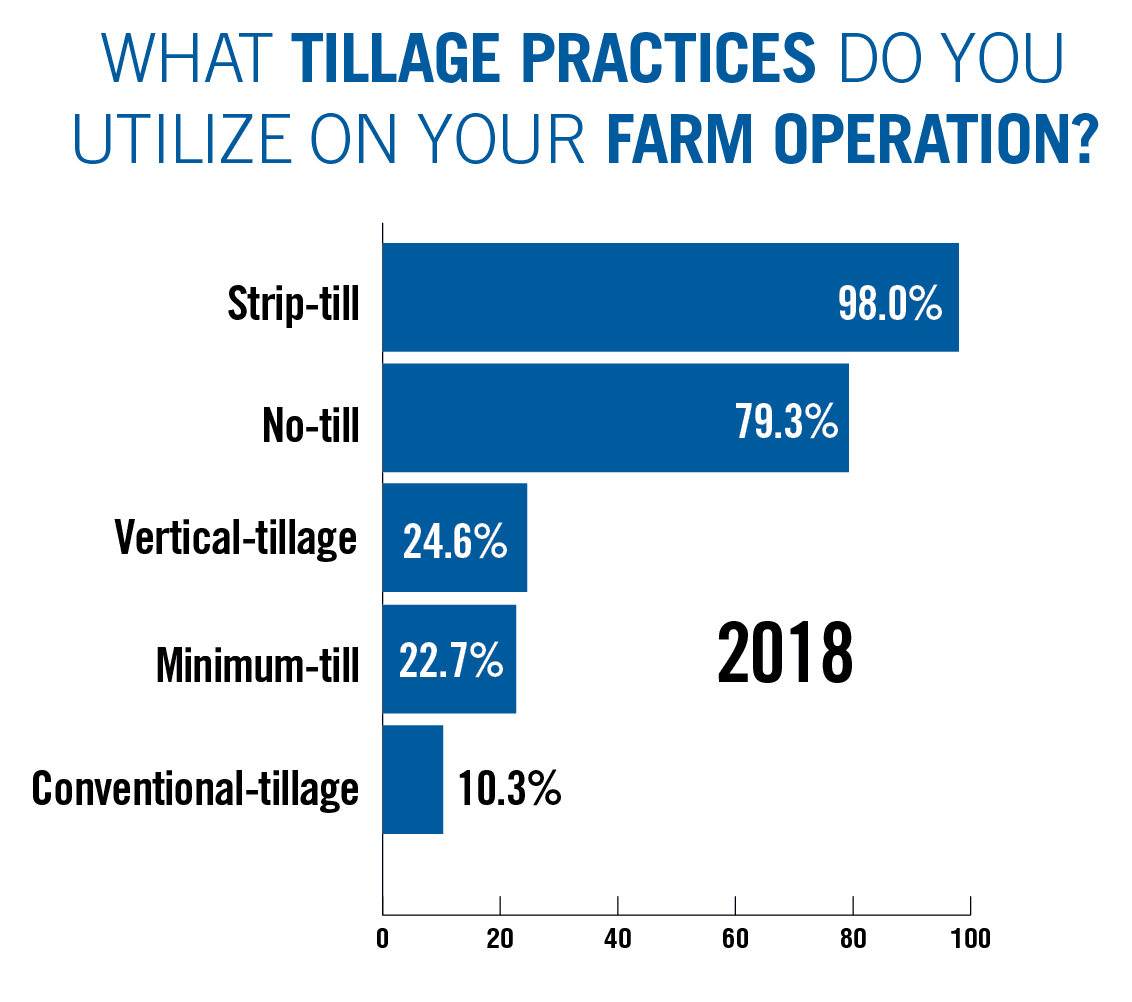
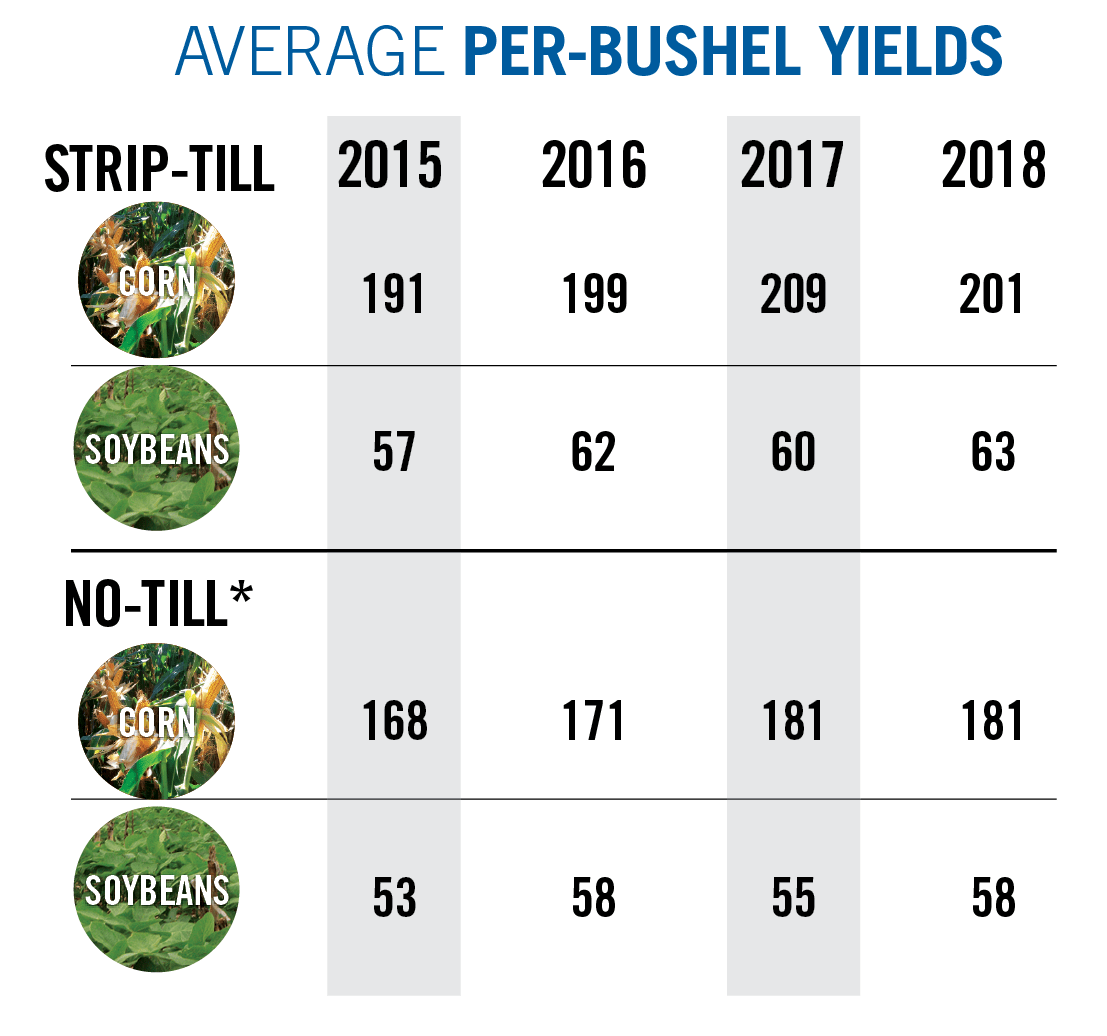
*Source: 11th Annual No-Till Practices Study
YIELD BUMP. Strip-tilled corn and soybean yields continued to outpace no-till in 2018, continuing a 4-year trend.
SEEDING DATA
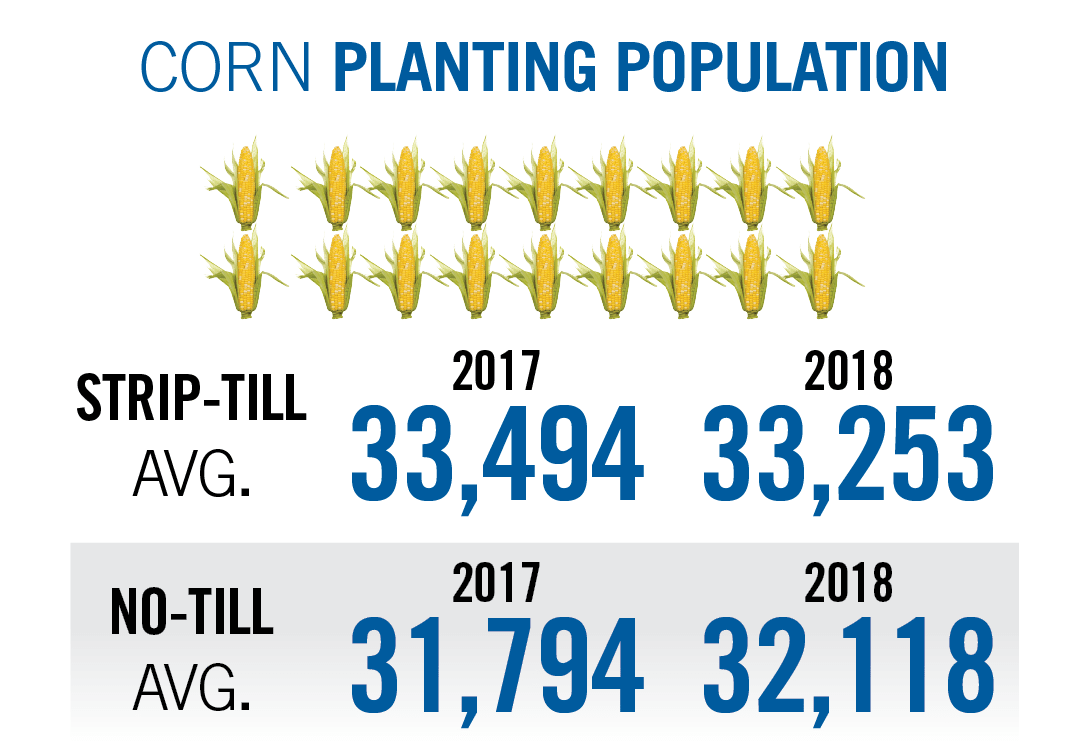
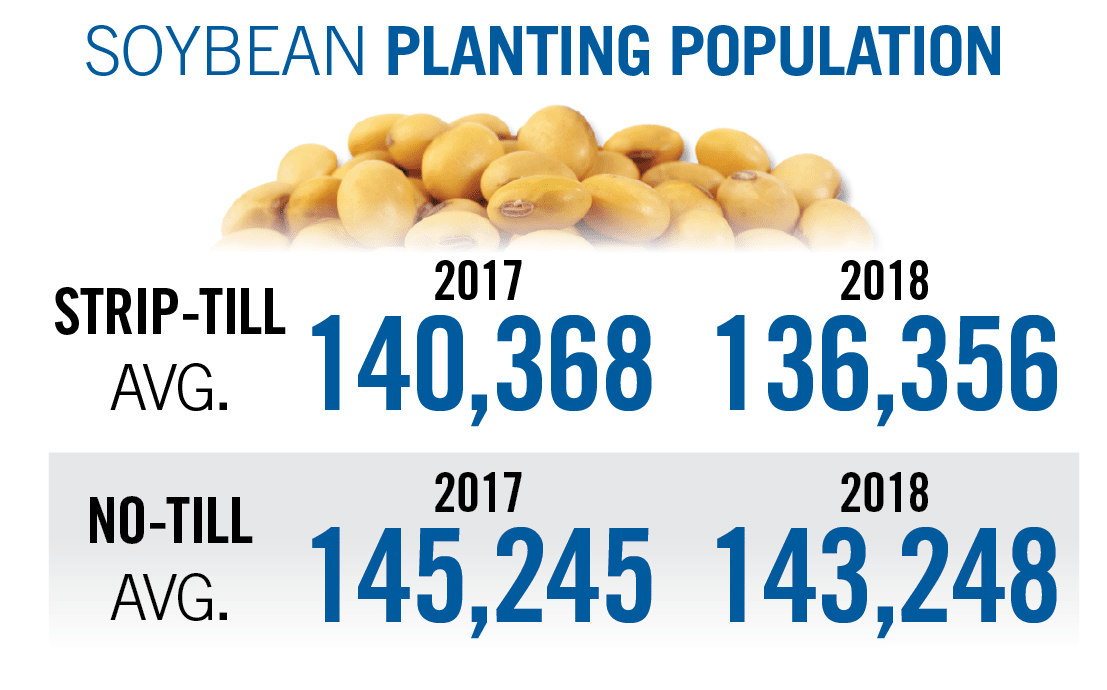
SEED SAVINGS. While no-tillers averaged lower corn seeding rates, strip-tillers were dramatically lower with average soybean planting populations in 2018.
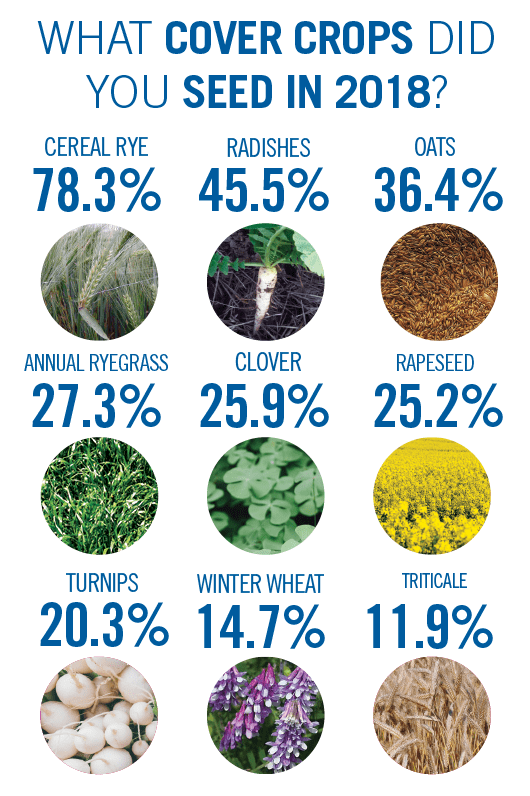

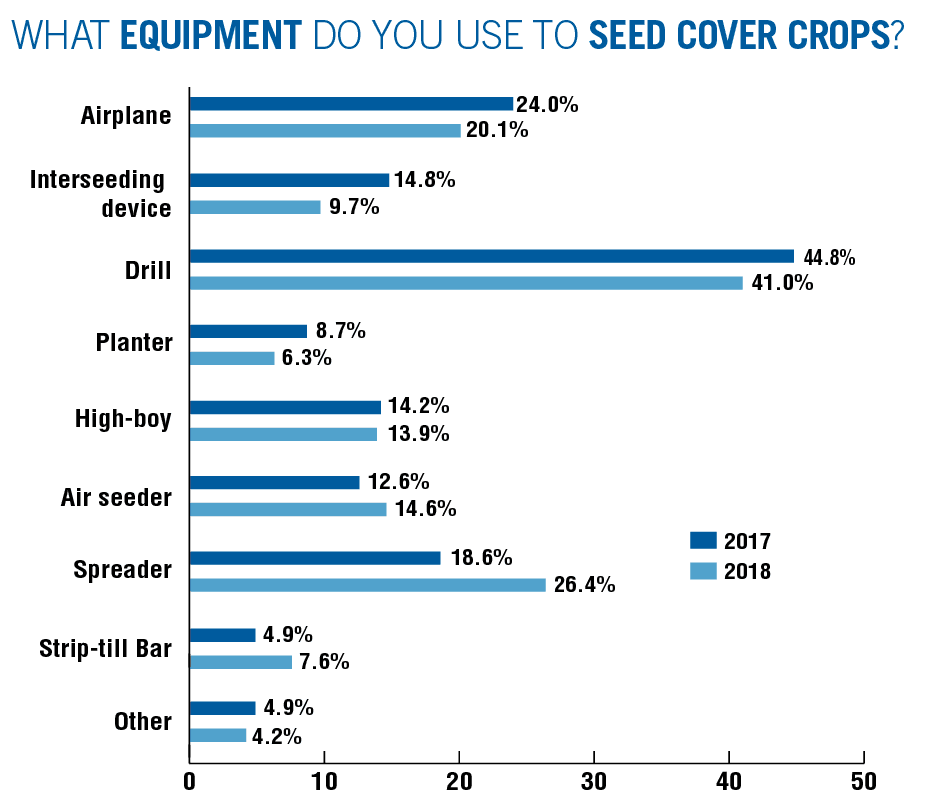
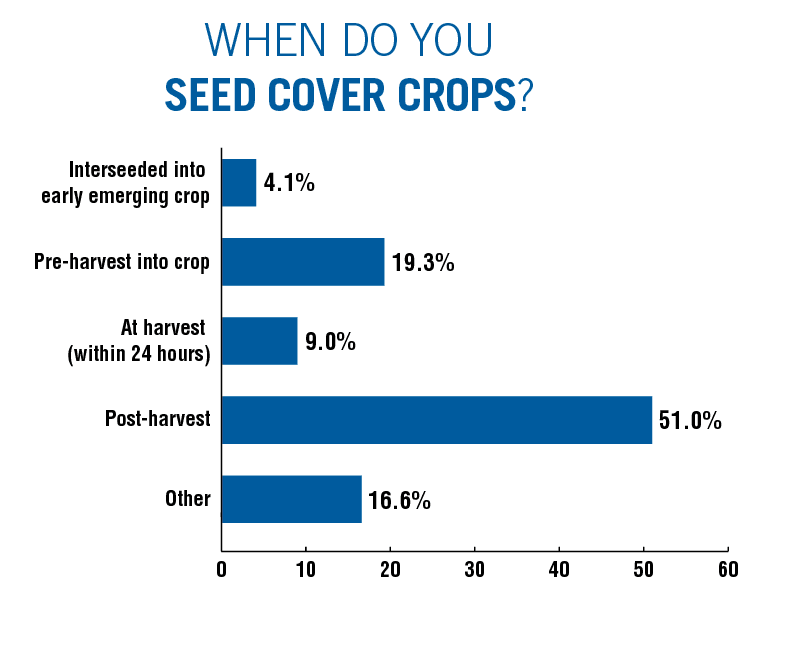
GETTING COVERED. Some 60% of strip-tillers preferred to seed covers during or following 2018 harvest.
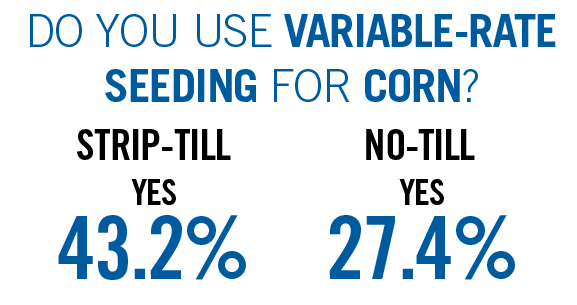
FERTILIZING PRACTICES
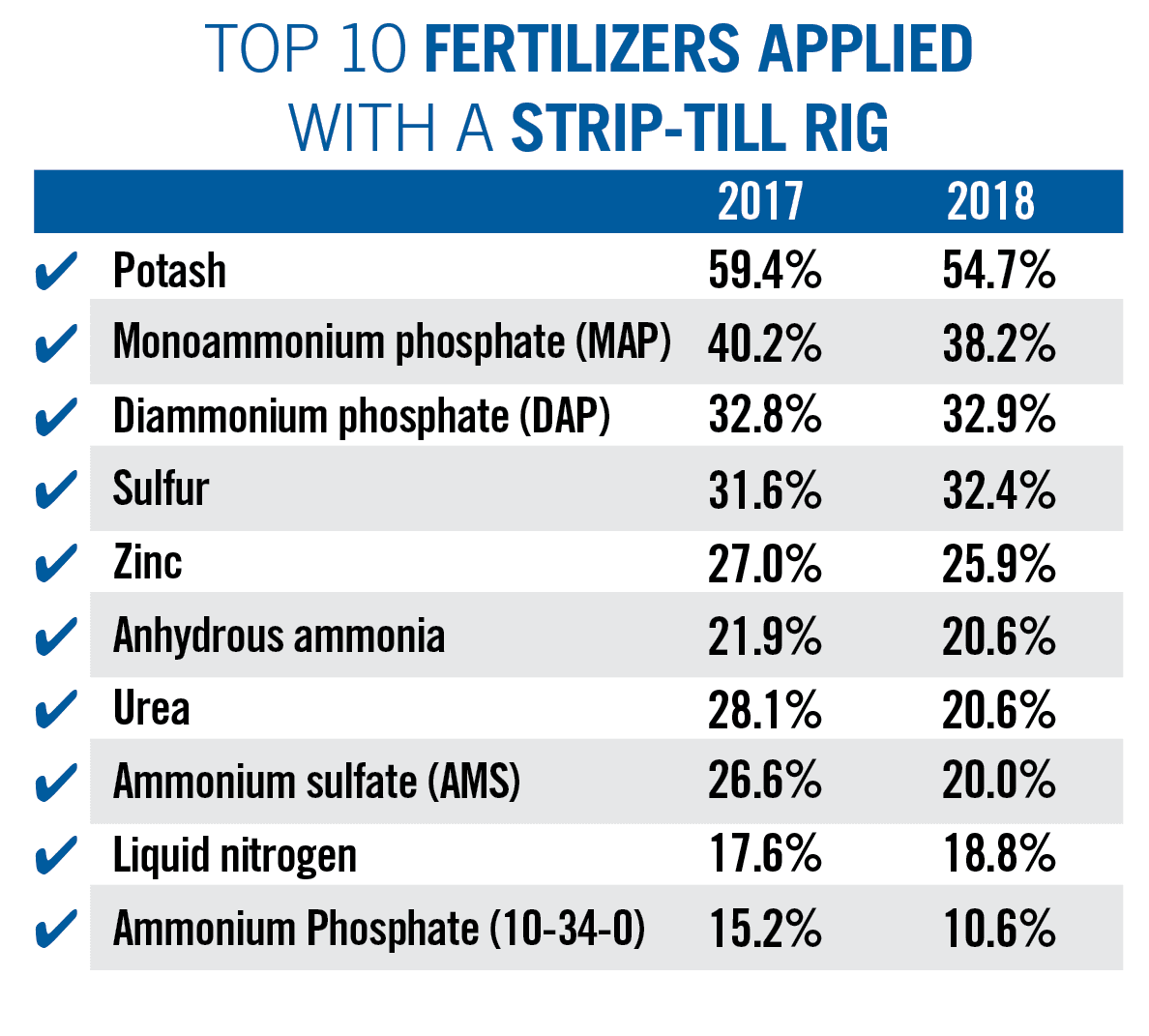
CUTTING BACK. Since 2014, strip-tillers applying anhydrous has dropped by more than 18% to a low in 2018.
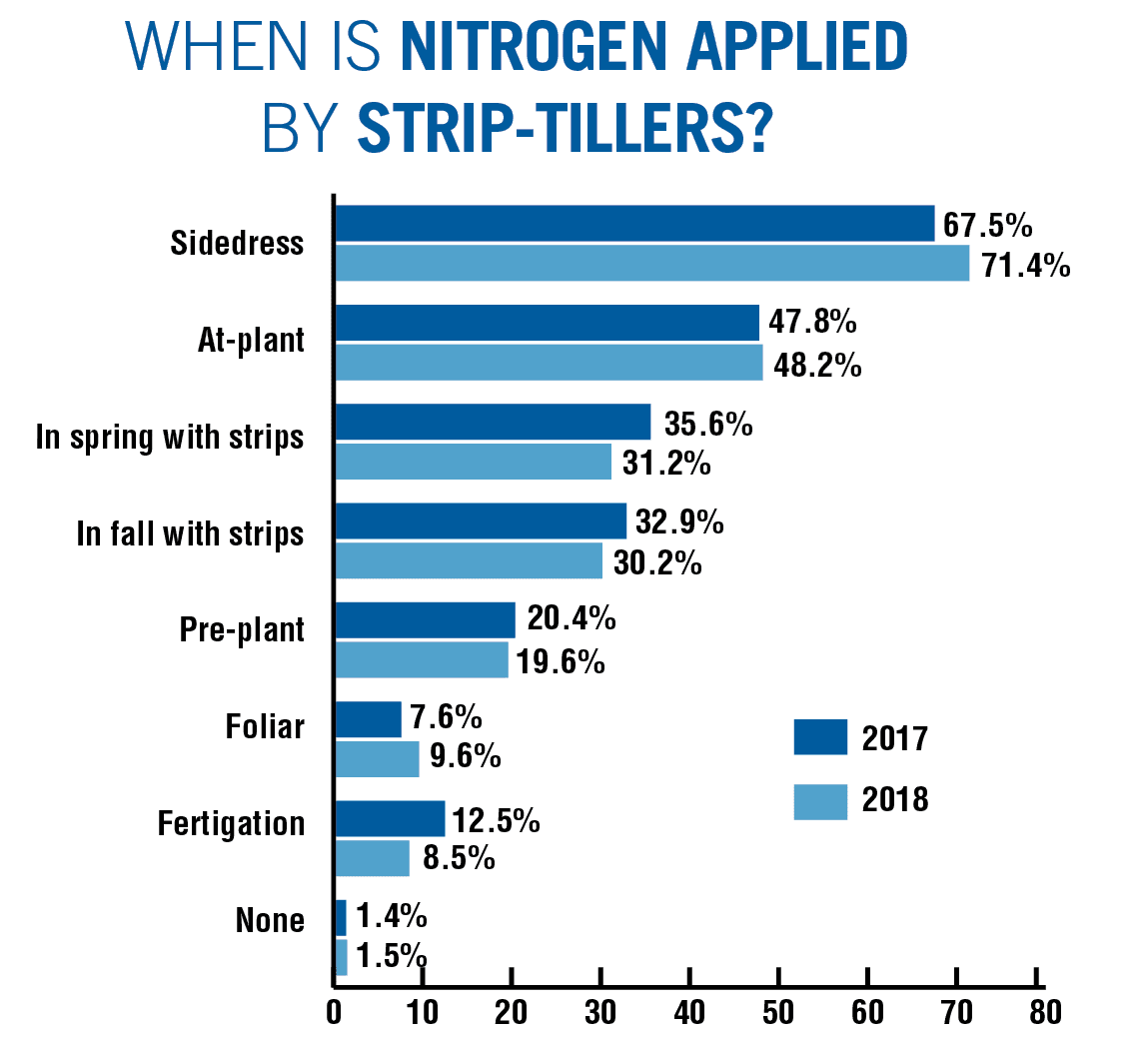
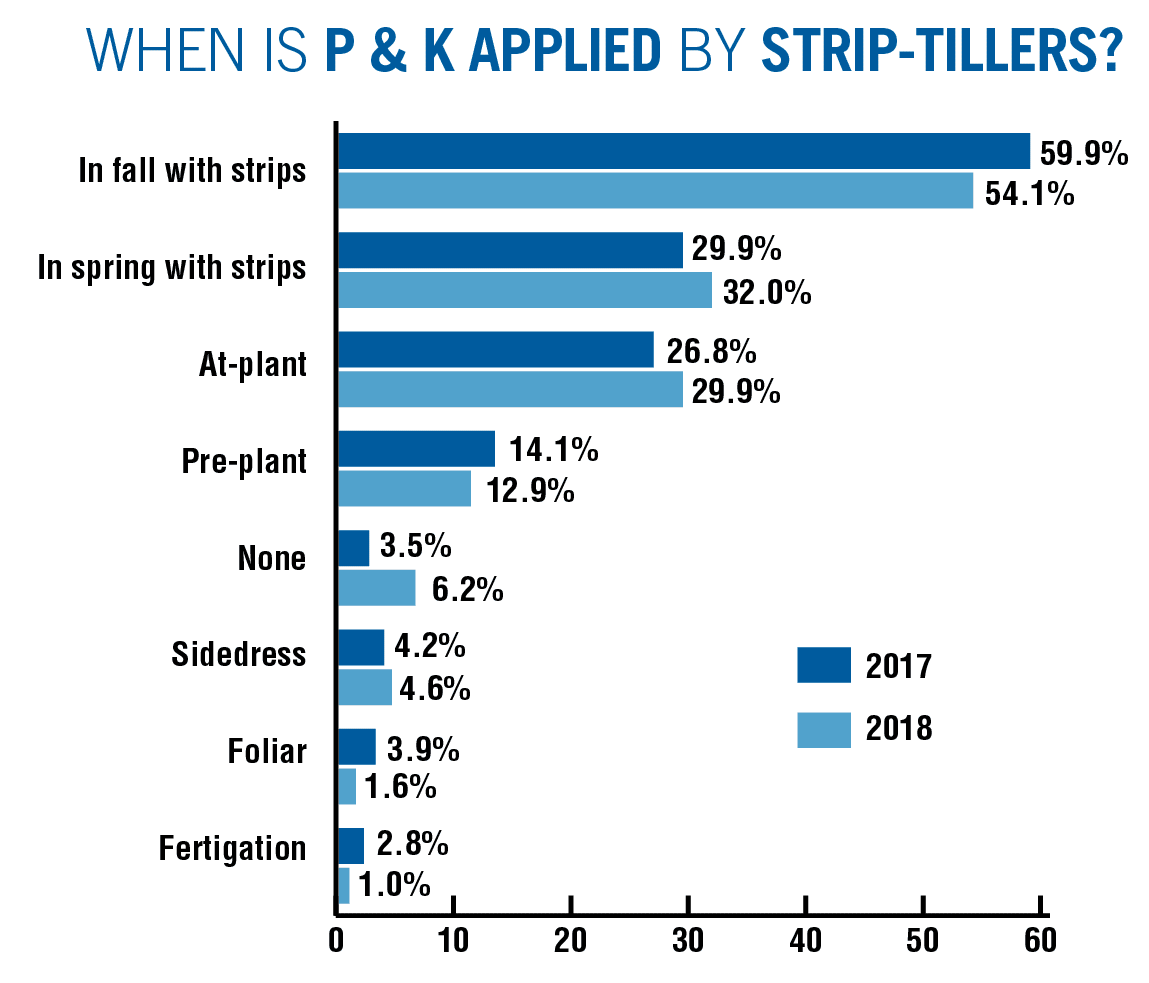
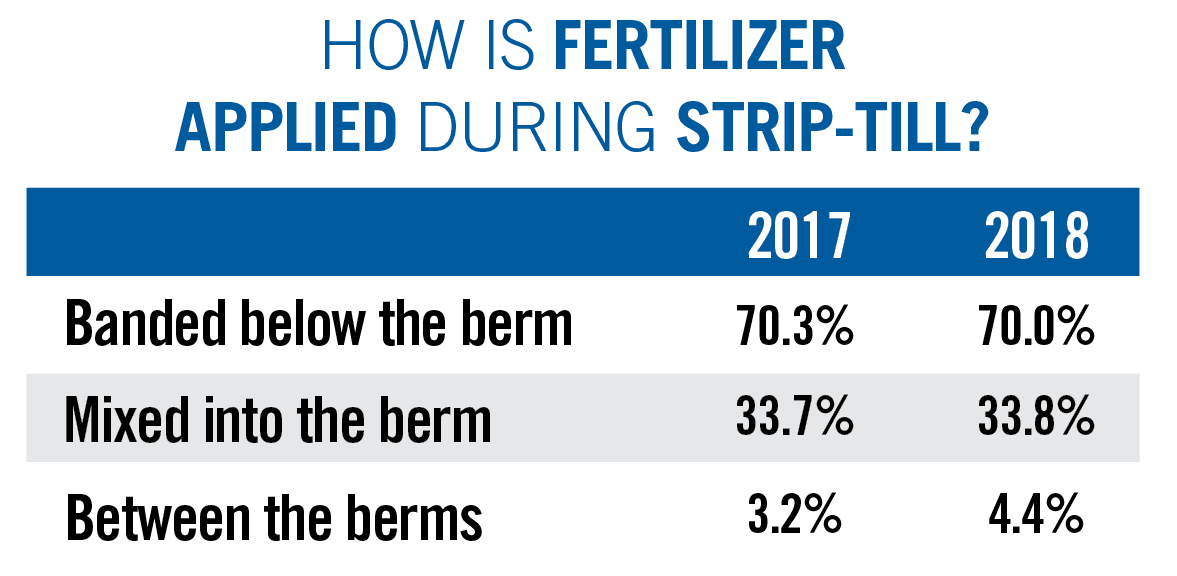
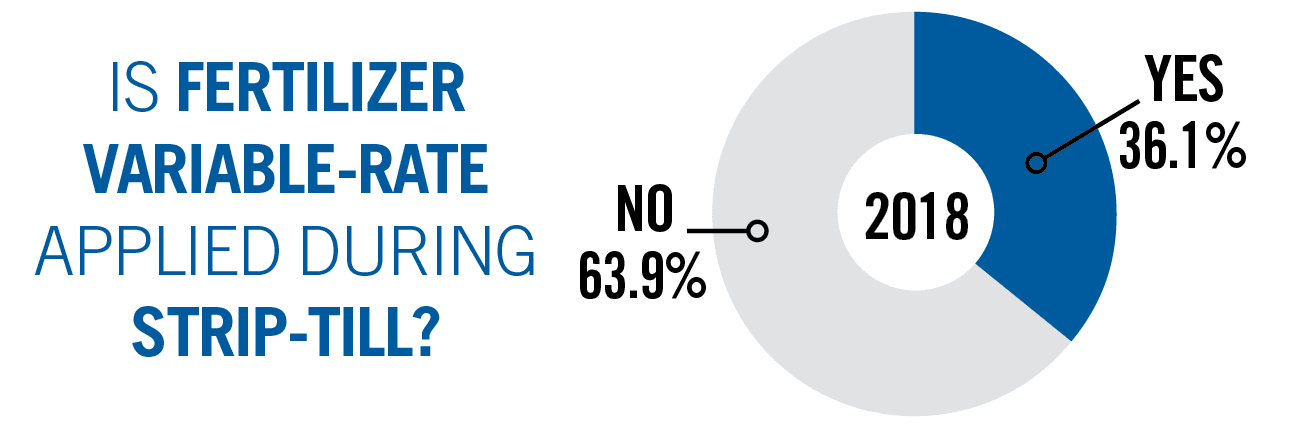





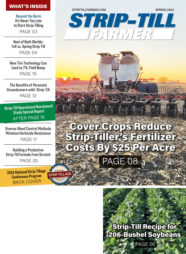
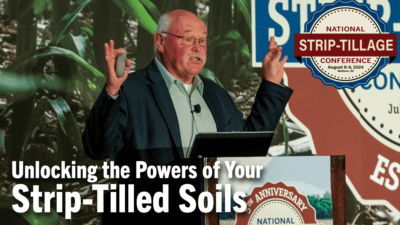



Post a comment
Report Abusive Comment